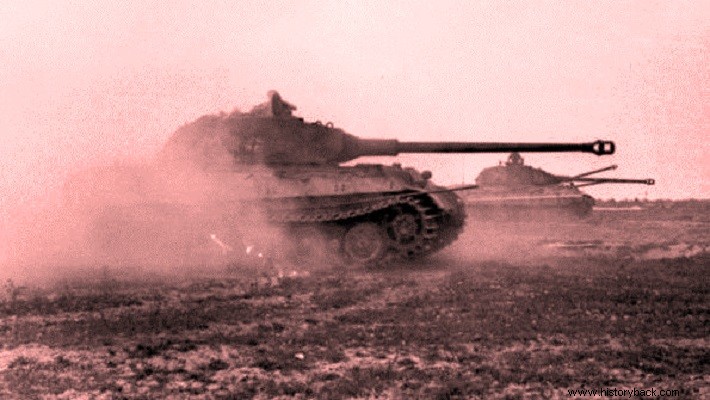
Shortly after the entry into service of the Tiger I tank (PzKpfw VI) in 1942, it was decided to design a new and even heavier and more powerful tank. Porsche and Henschel were asked to present their designs for a 70t chariot. with armor capable of withstanding the fire of any Allied cannon and armed with a long-barreled 88mm cannon. with a 71 caliber barrel.
Henschel's design was eventually chosen, after a few tanks were produced with the Porsche tower. The Tiger II, known as the Königstiger (King Tiger), was 7.25m long. width 4.27m. and a height of 3.27m. Its weight was 69,400 kg. The chariot was powered by a twelve-cylinder, liquid-cooled Maybach HL 230 p.30 gasoline engine, producing 600 hp.
The maximum speed of the chariot, on the road, reached 38 km per hour. The tank's strong points, however, were its incredibly strong armour, which had a maximum thickness of 185mm. (7.28 in) and its deadly 88mm gun. 71 caliber KwK 43, which could destroy any Allied tank from a distance of up to 2.5 km when to hit it they had to come within 800 m to be able to penetrate its lighter side chest. The tank also had two 7.92mm machine guns. It had a crew of 5 men.
Fortunately for the Allies, only 485 tanks of the type were built. Tanks were used for the first time in Normandy, but with bad results. The same thing happened in August 1944, on the Eastern Front, where due to the marshy ground, the tanks got stuck in the mud and were destroyed. But the chariot was to show its worth in Hungary.
There a detachment of royal tigers destroyed 121 tanks and 244 Soviet guns of all types, they also shot down five aircraft and destroyed a train, with losses, in the battle, of 10 tanks. A royal tiger division, between January and April 1945, destroyed over 500 Soviet tanks, with the loss of 45 of its own.
The great enemy of the Royal Tigers was the Allied aircraft, which, in the absence of resistance from the German air force, operated unmolested. The Tiger IIs were also active in the last German attacks, in the Ardennes and in Pomerania.
